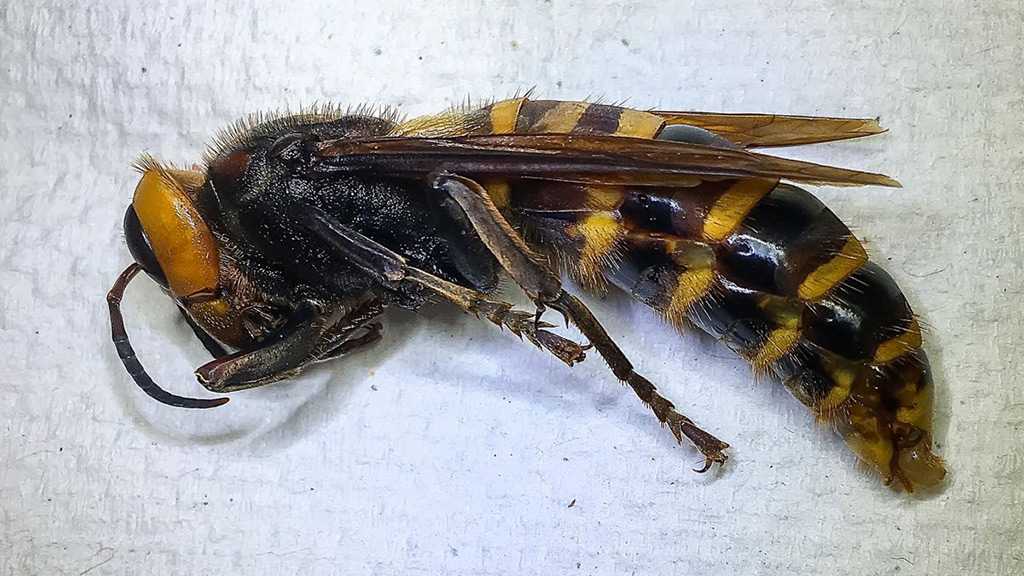
First “Murder Hornet” Captured in Washington

By Staff, Agencies
The Asian Giant hornet [Vespa mandarinia], known popularly as "murder hornets", joins the list of nightmares offered by 2020, alongside the coronavirus pandemic and the lockdown. Famous for their size, poisonous stings and vicious attacks on mice pictured in graphic viral videos, the wasps were said to have arrived to the US in early May.
While five "murder hornets" have been spotted in the United States to date, one insect has been captured by researchers, according to the Washington State Department of Agriculture [WSDA].
The hornet, with a 3-inch wingspan and a stinger one quarter of an inch long, was identified in the WSDA bottle trap on 29 July, near Birch Bay in Whatcom County.
“This is encouraging because it means we know that the traps work,” Sven Spichiger, managing entomologist for the department said. “But it also means we have work to do.”
Now, researchers plan to look for hornet nests using infrared cameras, placing more traps so that a living insect can be caught. Once a hornet is captured alive, WSDA will try to tag it and follow its trace to the colony, so that the hive can later be eradicated.
Scientists hope to locate and destroy the nest by mid-September, so that hornets do not have the chance to increase in numbers. Usually, the middle of September is when new drones and queens emerge, and if workers can prevent that, the pest will not spread.
The arrival of Asian Giant Hornets into the United States was first noted in early May, with scary viral videos of hornets eating mice and, vice versa, getting eaten by a praying mantis, spreading online and causing concerns among some Americans.
The large wasps are also labeled "murder" because of their almost 2-inch body length and extremely painful and poisonous sting capable of dissolving human flesh.
Residents of the state of Washington are asked to watch for wasps, especially in August and September, and report if one or more are spotted.
Comments
- Related News



